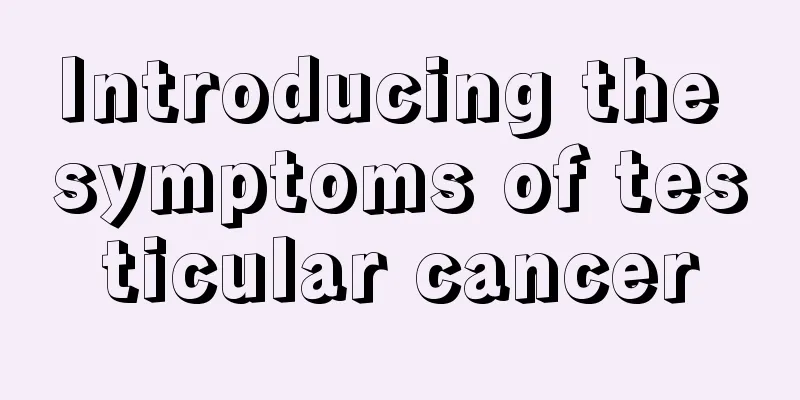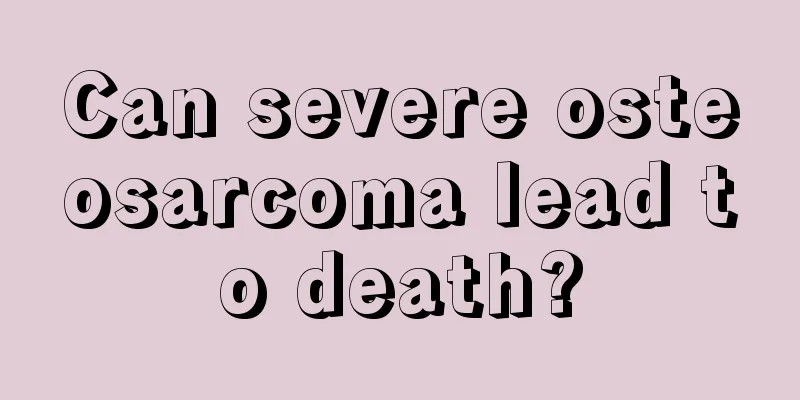Introducing the symptoms of testicular cancer

|
Cancer is a common malignant disease and the most difficult to treat and recover from among all diseases. After suffering from cancer, you must actively cooperate with the doctor's treatment, maintain a good attitude, and don't give up easily in order to regain new hope. Testicular cancer is a malignant tumor exclusive to men. Below, we will introduce the symptoms of testicular cancer. Testicular tumor is one of the common tumors in urology. It is almost always malignant, and there are three peaks in the age of onset: yolk sac tumor (infantile embryonal tumor) is the most common in infancy; various types of testicular tumors can be seen between the ages of 20 and 40, but seminoma is still the most common, and seminoma is the main tumor after the age of 70. Its cause is still unclear, and it is currently believed that its onset is related to both genetic and acquired factors. Among them, it is most closely related to cryptorchidism. The chance of cryptorchidism developing tumors is 10 to 14 times greater than that of normal people. Cryptorchidism in the abdominal cavity is higher than that in the groin. Testicular fixation does not reduce the incidence of malignant changes, but it can make tumors easier to detect. The most common symptom is a gradual, painless enlargement of the testicles with a feeling of heaviness. The enlarged testicles of seminoma often maintain the testicular contour and have a consistent texture, while teratoma is nodular and has inconsistent hardness and softness. About 10% of patients feel pain due to intratesticular bleeding or infarction, and 10% of patients may have metastatic symptoms, such as large retroperitoneal lymph node metastasis, compression of nerve roots, back pain, lung metastasis may cause cough and dyspnea, duodenal metastasis may cause anorexia, nausea and vomiting, bone metastasis may cause bone pain, etc. Testicular Leydig cell tumor should be considered when children have testicular masses and symptoms of precocious puberty, or adults have gynecomastia and loss of libido. The cause of testicular cancer is still unknown, and it is currently believed that its onset is related to both genetic and acquired factors. Among them, cryptorchidism is the most closely related. The chance of developing tumors in cryptorchidism is 10 to 14 times greater than that in normal people, and cryptorchidism in the abdominal cavity is more likely than in the groin. |
<<: What are the symptoms of testicular cancer
>>: Introducing the main symptoms of testicular cancer
Recommend
Can I eat donkey-hide gelatin in autumn?
There are many kinds of supplements on the market...
More than two months after colon cancer surgery, what is the reason for abnormal bowel movements?
Abnormal stools two months after colon cancer sur...
How to judge ankylosing spondylitis iritis
Ankylosing spondylitis is an inflammatory disease...
What are some tips for relieving itching from eczema
In our daily life, the skin is particularly sensi...
Can fatty liver be treated? Diet therapy can help you
The current incidence of fatty liver is increasin...
How to remove oil stains on down jackets
Many friends need to know how to remove oil stain...
My back hurts because of my bad heart
The heart is the most important organ in our body...
Why does my whole body feel numb when I’m angry?
Many of our friends always can't help losing ...
What complications can prostate cancer cause?
Prostate cancer is the most common male disease. ...
Who should not wear yellow tiger eye
Not only Chinese people, but people all over the ...
What is the method of massaging the acupuncture points on the soles of the feet
Massaging the acupoints on the soles of the feet ...
What are the symptoms of advanced liver cancer from lung cancer? Two common symptoms of advanced liver cancer from lung cancer
In the late stage of lung cancer, liver metastasi...
Milk is not the first among the top ten calcium-supplementing foods
Most people supplement calcium through calcium su...
Is stage IIA cervical cancer considered advanced?
Xiaoli was diagnosed with cervical cancer during ...
Can sperm reproduce?
Women only lay eggs once a month. In comparison, ...









